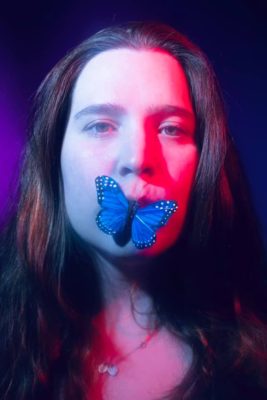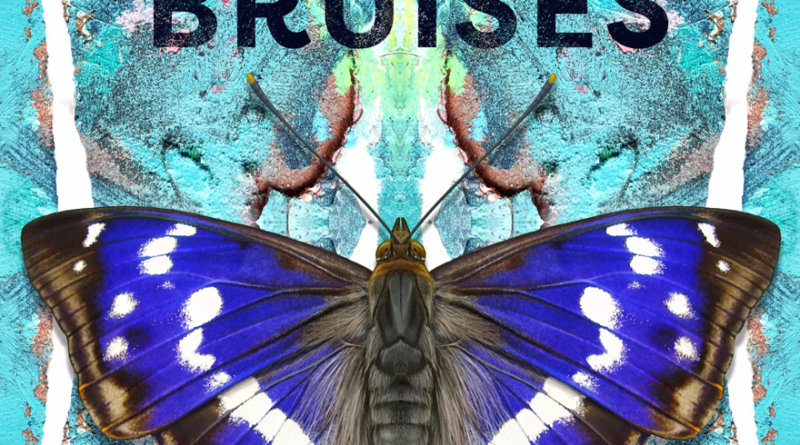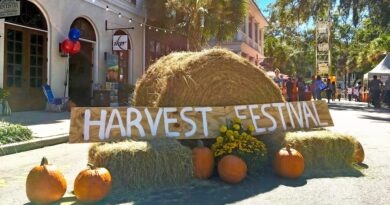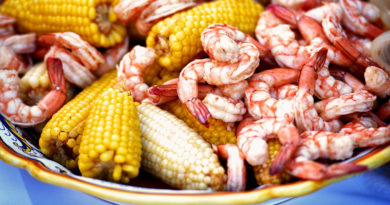INTERVIEW WITH PALMER SMITH
Author of The Butterfly Bruises
Book Cover by EVI ANTONIOU Photo by JASPER SOLOFF
 What draws you to writing as an art form? What made you decide to write “The Butterfly Bruises”?
What draws you to writing as an art form? What made you decide to write “The Butterfly Bruises”?
Every type of art has inherent value to either the artist or the audience, and oftentimes both. I am drawn to writing for its ability to affect both the reader and the writer. I believe it is one of the holiest forms of communication, particularly because when reading, the reader cannot truly “interrupt” the writer. The reader has to consider the writer’s perspective and let the book sit with him or her until a lesson (hopefully) is learned.
I decided to write this book because the poems and stories are impactful and serve larger purposes, such as promoting animal and ocean conservation, considering how we communicate with one another, confronting issues of toxic relationships, and communicating the differences and similarities of Southern US culture vs. Northern US culture. Historically, male poets have had the advantage of being published and read more frequently than most female poets. This book centers around the female-identifying perspective, which is often one that is still fighting to be heard.
You spent your summers in the South as a child. How has the South influenced your work- South Carolina specifically?
On a subconscious level, the influence of the Southeast affects almost all of my work. I was fortunate to have spent my summers in the Carolinas and northern Florida as a child. I was able to observe the differences and similarities of the Northeast and the Southeast from a young age. When I think of the South, I think of nostalgia, physical beauty in the landscape, and small-town charm. I also think of the fact that the South is constantly changing. I think of friendship, kindness, and warm and delicious food. When thinking of South Carolina specifically, several images come to mind: the crickets and lizards my brother and I would find while playing outside visiting my uncle and aunt in Beaufort, the alligators and birds we would spot in Georgetown, the colorful and spectacular buildings we would walk by in Charleston, and the sunsets along the marshes in the Lowcountry. The summers I recall were full of the outdoors with little to no technology (1998-2006). Our childhood had just missed the extreme evolution of the iPhone and other gadgets. We were able to truly be present in the moment. I’m grateful for that. All of these images have enhanced my writing, especially those related to nature. Almost all of the memories I have of the ocean and/or lakes are memories from the South. If I had not visited the Southeast as much I have, I don’t think my writing would keep reverting back to these subjects that are close to my heart.
 What are the major themes in your book?
What are the major themes in your book?
Some themes I have not mentioned more deeply are those related to New York City and physical/emotional pain and physical/emotional relief. I grew up in New York during the school year and of course, harbor an extreme passion for the city. During COVID, a lot has changed, but Manhattan will always be resilient. I mostly have written about small daily moments of life in Manhattan, such as grabbing a cup of coffee from one’s favorite coffee shop, watching a moment unfold in Central Park, working during the daily grind in Midtown, and poems about 9/11. In terms of pain/relief, a lot of those poems are geared towards death, life, grief, and joy. In writing that section, I believe I was trying to understand the highs and lows of how we as humans survive when times get difficult.
You write both poetry and prose. Do you prefer one form over another?
When I first started writing, I gravitated towards short stories only. I did not set out to write poetry. In fact, I did not understand the purpose of poetry. Style-wise, I always thought prose made the most sense. After taking a course with the poet Tina Chang, everything changed. Poetry began to click. I understood why its brevity, spoken nature, and clever wordplay could be valued and appreciated. I do not prefer one over the other at all. I think it just depends on what sort of mood I’m in…
What writers have influenced your work?
So many! Lorrie Moore, Denis Johnson, Mary Morris, Carolyn Ferrell, Rebecca Solnit, and Jenny Offill have all influenced my writing. I am particularly drawn to different and unique styles of writing. For instance, Jenny Offill’s “Department of Speculation” plays around with shorter prose that almost reads lyrically. This book gets to the core of a marriage falling apart in less than 200 pages, and I think I read it in one sitting. It’s just that good.
What advice would you give to aspiring young writers today?
Practice, practice, practice. Don’t quit, and try to carve out time to devote yourself to the act of writing. It’s difficult to find time in the day, but if you really want to pull it off, you can. My goal was to have a book published before I turned 27. I deeply believe that if you put your wishes out into the world and if you work your butt off, the universe will conspire to make it happen–or so it is said in the book The Little Prince. Also, don’t listen to those who tell you you can’t or aren’t capable of following your passions. It’s up to you to make it happen, and you can make it happen…
The Butterfly Bruises will be released and available at Nevermore Books on May 15. Please join Palmer at the Pat Conroy Center on Friday, May 28 at 11:30 a.m. for a reading of The Butterfly Bruises, register through her website https://www.thebutterflybruisesbook.com/




